This article is a guide on how to use Tulip’s Enterprise App Exchange feature to share content between multiple plants.
You must be on the "Enterprise" plan to use this feature
Tulip allows users to import apps from two different types of Libraries:
- Tulip Library: Publicly available apps created by the Tulip team across many use cases
- Enterprise App Exchange: Apps that are shared internally within your company or with specific external service providers
This guide focuses on the setup and use of the Enterprise App Exchange, or EAE. This feature allows users with certain privileges to create a library of apps within a Workspace and then easily share those apps with other workspaces and instances.
A prerequisite to create EAE apps is to enable Workspaces in order to have a designated Workspace to manage the EAE applications.
What is the Enterprise App Exchange?
The Enterprise App Exchange feature allows users to share apps across multiple workspaces or instances. It is meant for sharing internal standards that are relevant to multiple plants within your company.
It is not meant for sharing between dev/test/production instances.
It can also be used to share apps in a secure way if your company wants to define a standard process that should be shared with contract manufacturers or contract development and manufacturings orgs (CDMOs).
There are two participants in the EAE:
- Publisher: The origin workspace or instance
- Recipient: The patron workspace or instance that received the content
In the Enterprise App Exchange, you are sharing versions of apps. This is ideal in situation where you want a template solution for apps, or the ability to create iterations based on a single template.
In order to update an app that originated from the EAE, you must share the latest version of the app. It will appear as a new app in the patron instance or workspace. Any versions of the same app imported prior to the new version will not be updated.
There are two ways to enable the feature:
- Sharing apps between workspaces
- Sharing apps between instances
Setup- Sharing Apps Between Workspaces
To enable the Enterprise App Exchange feature, click the user icon on the top right of the screen, then go to Account Settings in the dropdown tab. In the left navigation, click on App Exchange. Toggle the Enable Enterprise App Exchange button and select a Workspace from which you can add apps to the Enterprise App Exchange.
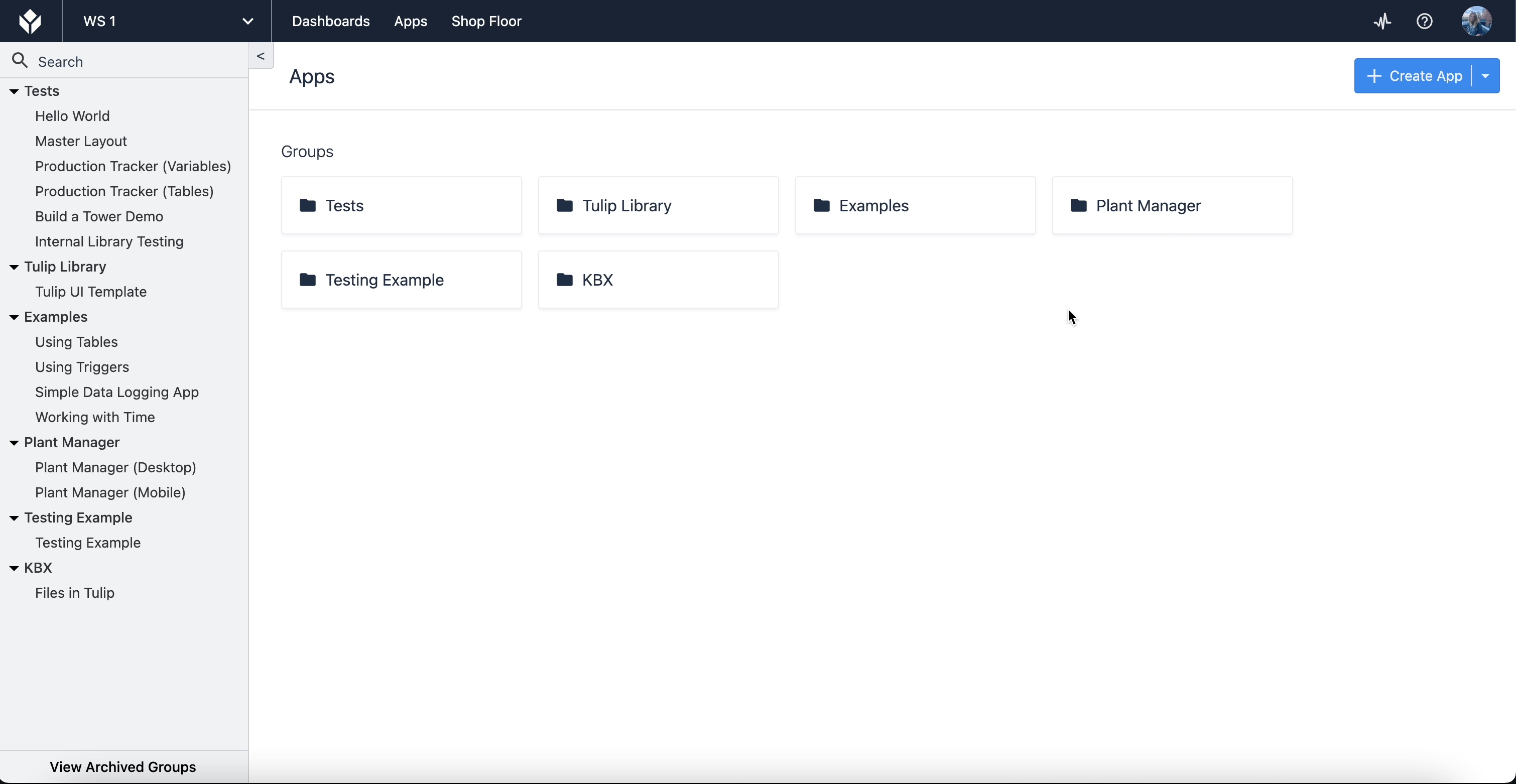
Once you have more than one app on the app exchange, an expandable list reveals data associated with the apps installed across multiple instances/workspaces and subscriptions to the EAE.
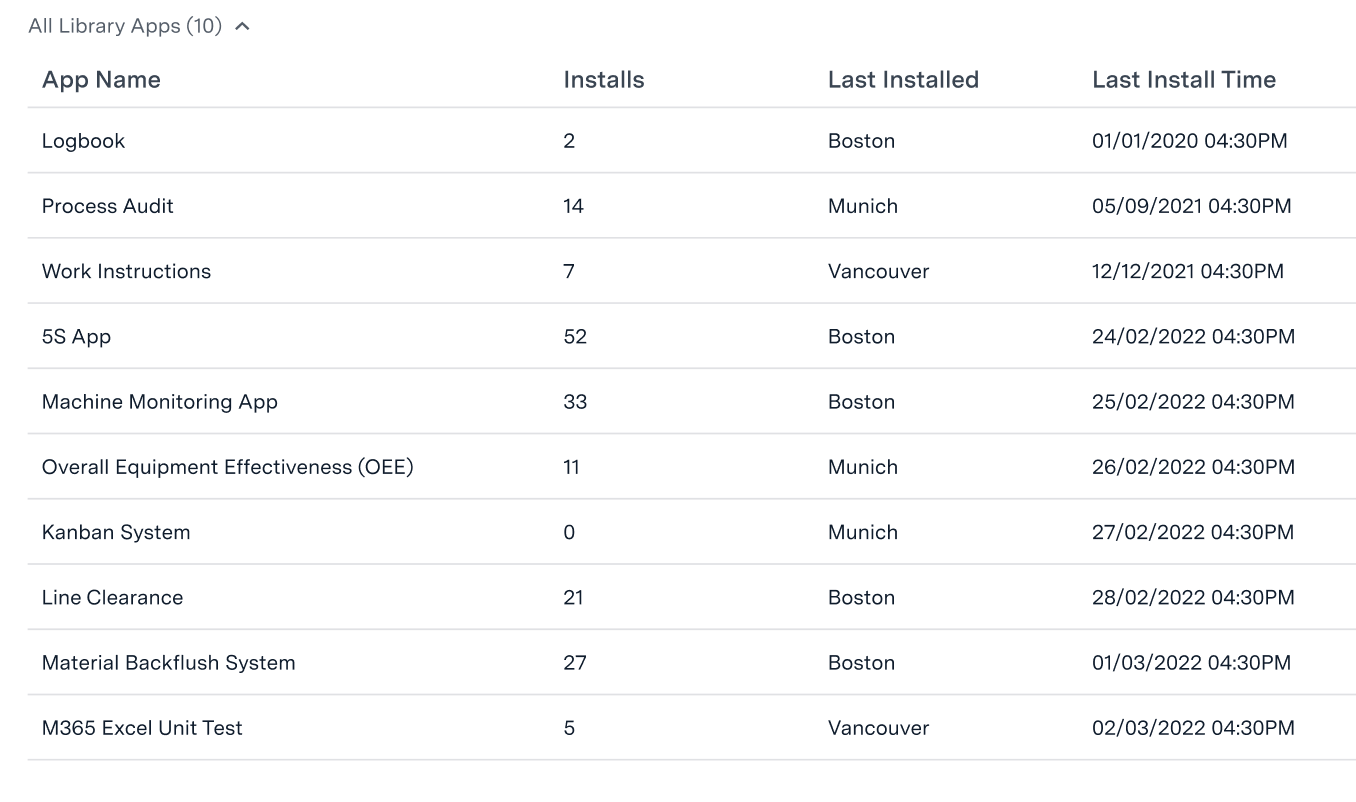
Setup- Sharing Apps Between Instances
Contact Tulip Support to enable this feature on both instances.
First, follow the steps in the section above. The same Tulip user should complete all steps below.
To connect your App Exchange content to another instance, navigate to the App Exchange page within Account Settings. In the parent instance, the instance sharing its App Exchange, click + Invite.
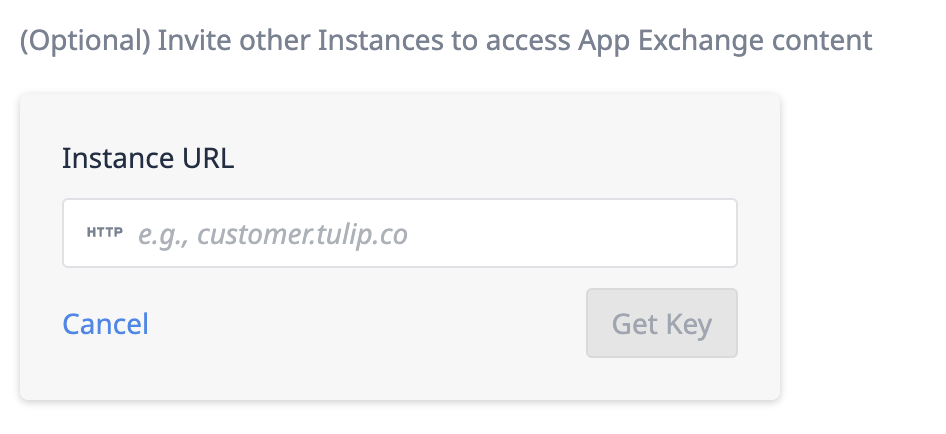
Enter the URL of the patron instance and click Get Key.
The Key acts as a secure password to sync the instances. Copy the Key, which has a unique one-time use.
In the patron instance's App Exchange page, click + Add App Exchange on the App Exchange page in that instance.
Enter the Instance URL of the parent instance and paste the Secret Key, then click Subscribe.
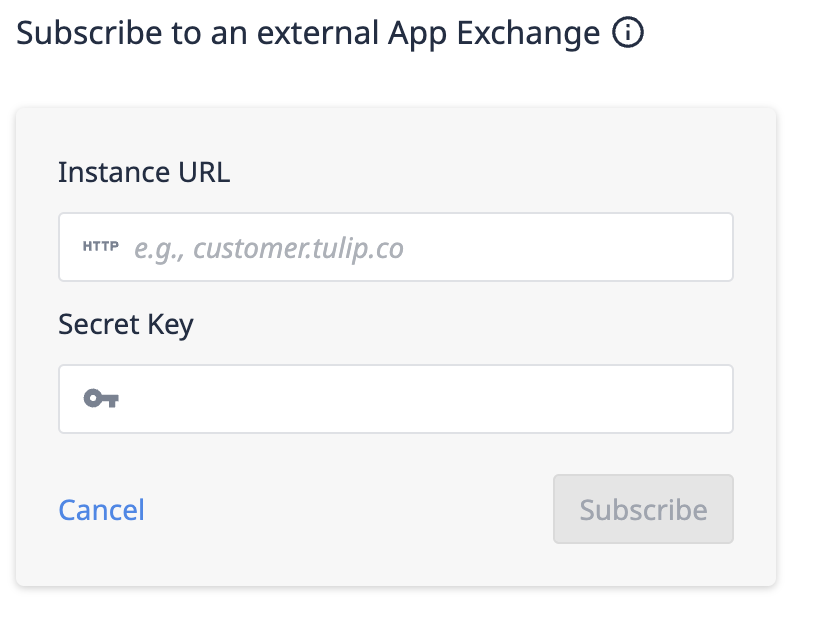
Add an App to the Enterprise App Exchange
Only published applications can be added to the Enterprise App Exchange.
Navigate to the Workspace specified for the Enterprise App Exchange and publish a Version of an application.
Go to the published application and click the Add to Enterprise App Exchange button.
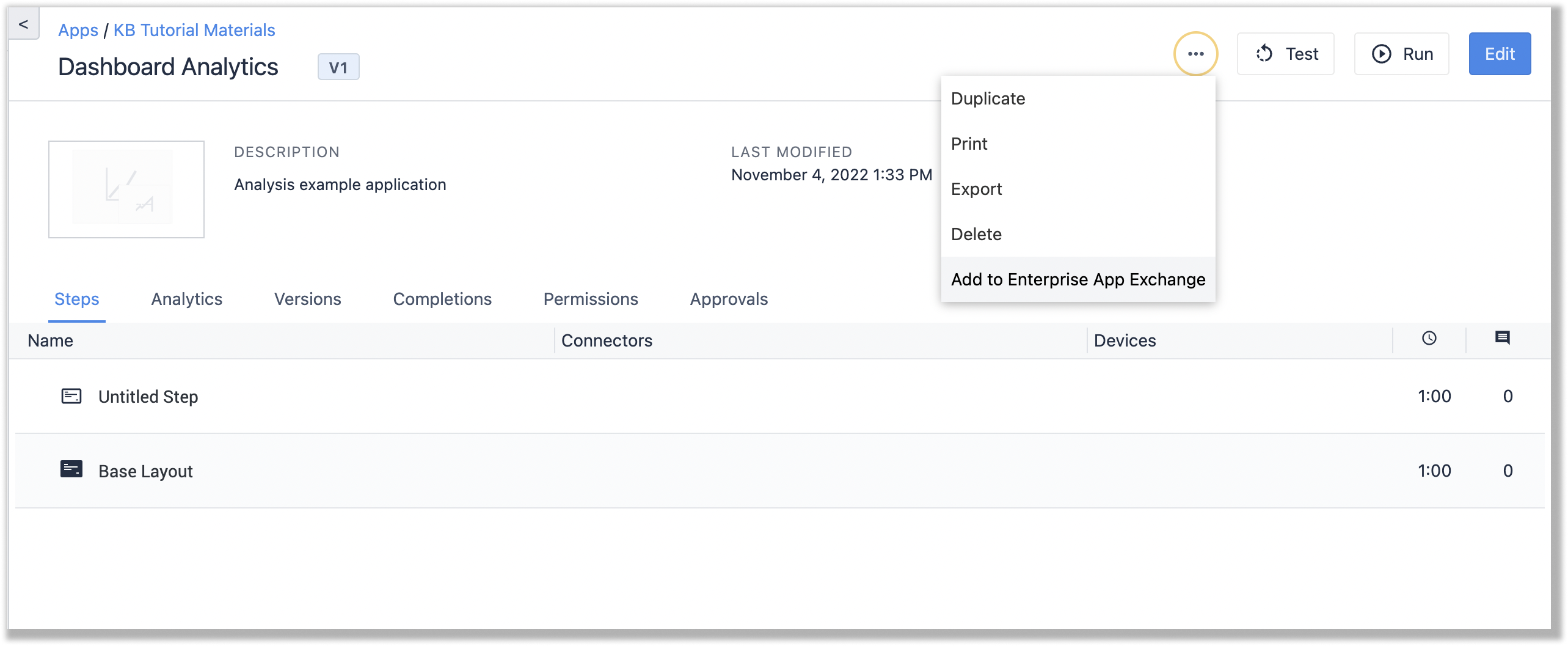
When the window shown below opens, type a description for the app and click Publish.
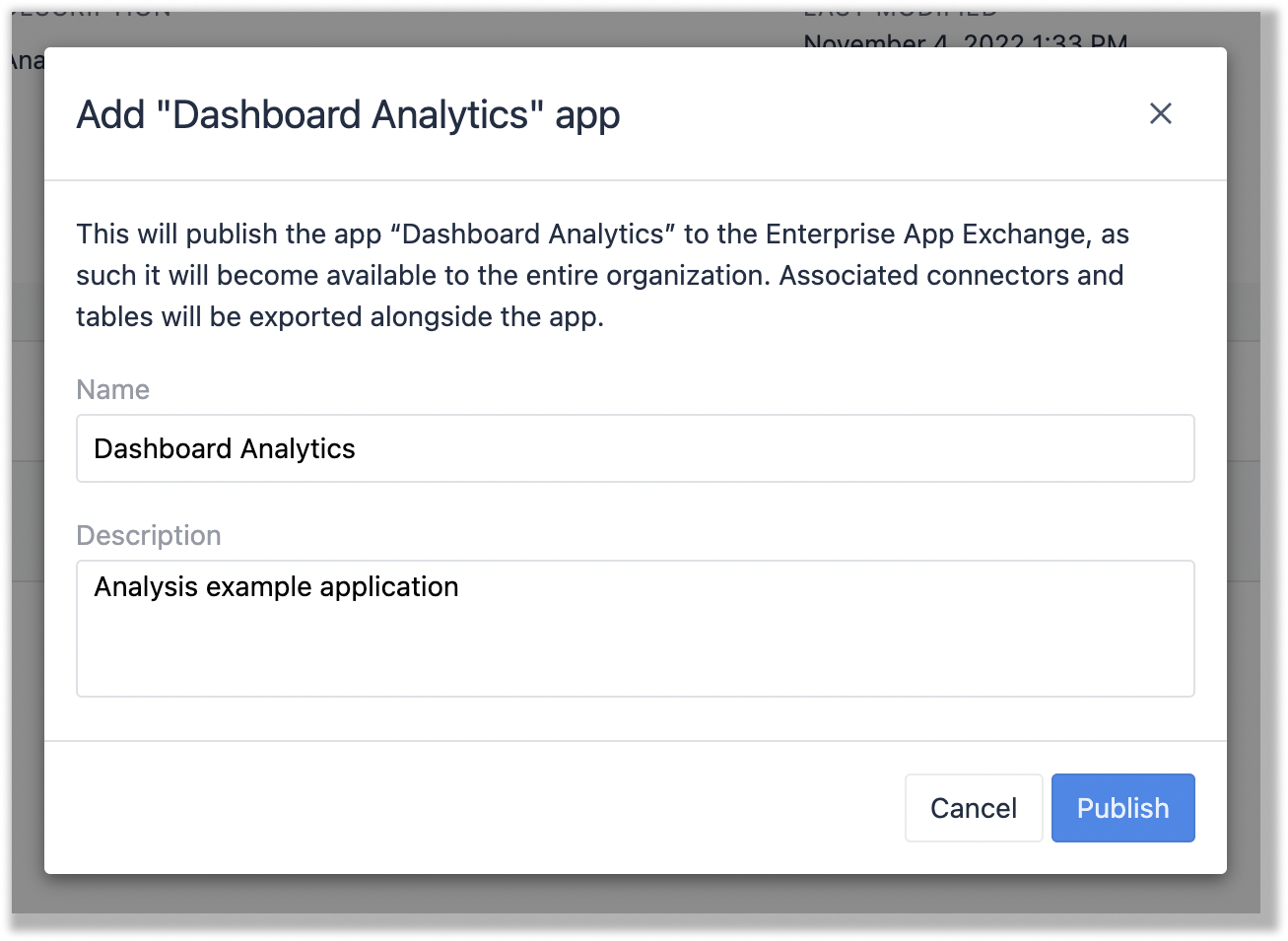
Notice that the app icon changed after it has been published. This indicates that this app has been added to the Instance's Enterprise App Exchange.
![]()
Import from the Enterprise App Exchange
To import from the Enterprise App Exchange, make sure you are in the patron workspace or instance.
Create a new app, and select from one of the apps under the "Find Apps" heading. All applications added to the Enterprise App Exchange are listed under this tab.
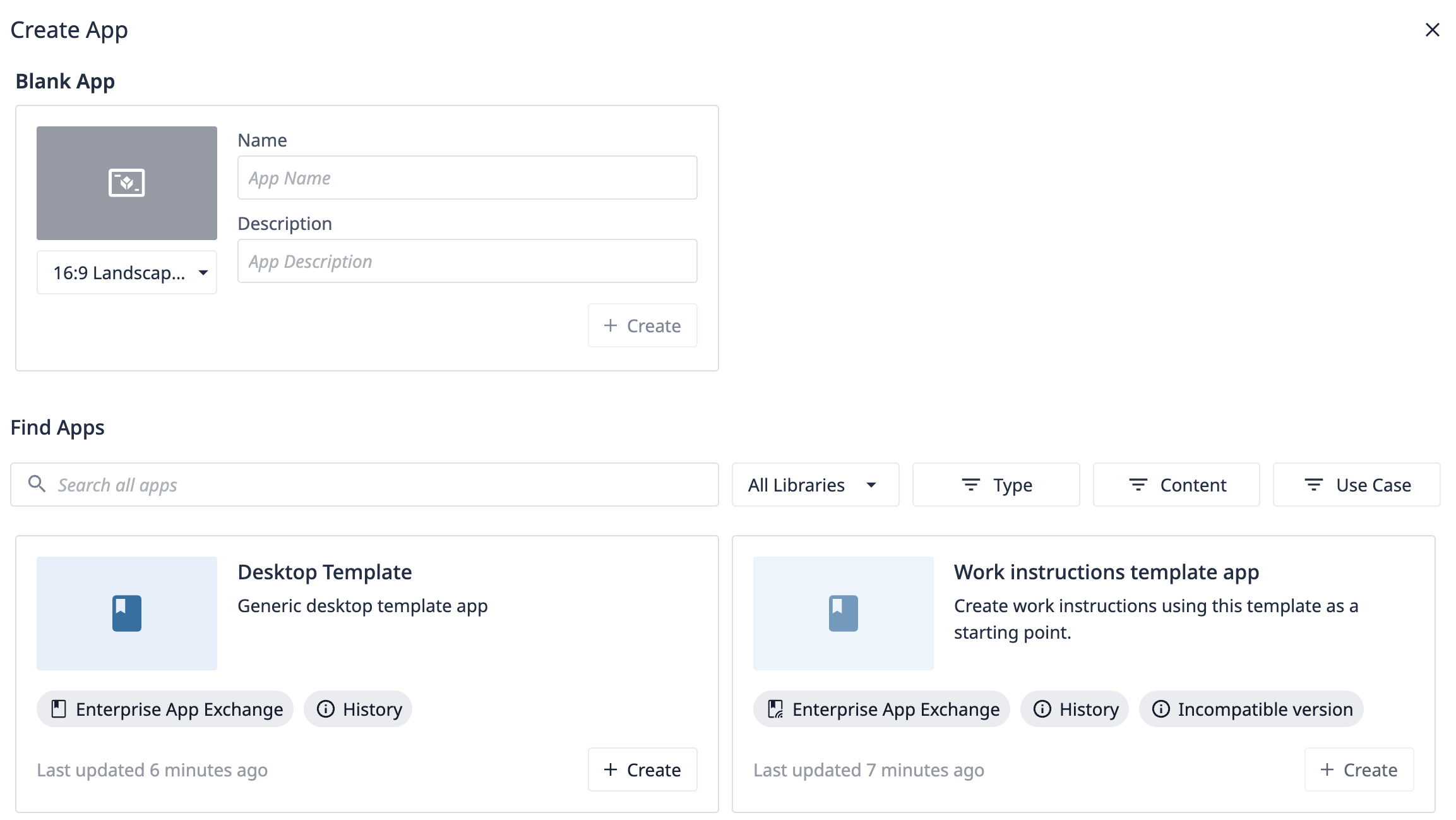
The following metadata is included with each app:
- Origin: Did the app come from the Enterprise App Exchange or Tulip Library?
- Version History: Who published this app, and when?
- Version Compatibility: Optional warning if the two instances are on different versions
Update Version of App on EAE
In cases where you would like to update the app version that is shared via the EAE, you must publish a new version in the origin workspace. Then, navigate to the "Versions" list for that app. Then, select "Update App Exchange".
This will ensure that all future imports of this app will be the latest acceptable version.

Updating App Version on the Patron Instance/Workspace
The Enterprise App Exchange cannot update the version of apps on the patron workspace or instance. It can only make new apps which are disconnected from previous imports from the Enterprise App Exchange.
Did you find what you were looking for?
You can also head to community.tulip.co to post your question or see if others have faced a similar question!

